The backhand is a crucial aspect of any tennis player's game, as it can be the difference between winning and losing crucial points. A strong backhand stroke not only allows players to return difficult shots but also helps them maintain control and dictate the pace of the game.
By understanding the importance of a strong backhand in tennis and exploring various backhand techniques and grips, players can improve their overall performance and reach new heights in their game.
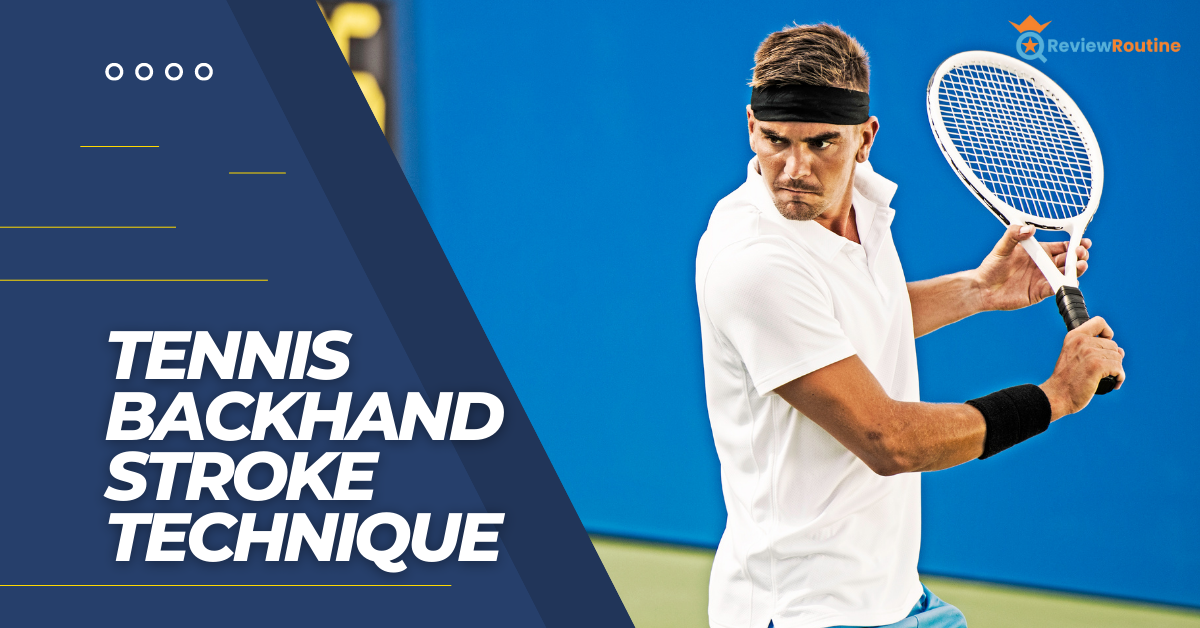
Importance of a Strong Backhand in Tennis
A powerful and accurate backhand stroke is essential for a well-rounded tennis game. It enables players to cover the entire court effectively and respond to a variety of shots from their opponents. A weak backhand can be easily exploited by skilled opponents who will direct shots to this vulnerable side, limiting a player's ability to return the ball and forcing them to play defensively.
A strong backhand not only improves defensive capabilities but also enhances offensive opportunities. With a solid backhand, players can hit powerful groundstrokes and passing shots, keeping their opponents on their toes and opening up the court for winners.
Furthermore, an effective backhand allows for better court positioning, as players can confidently cover both the forehand and backhand sides.
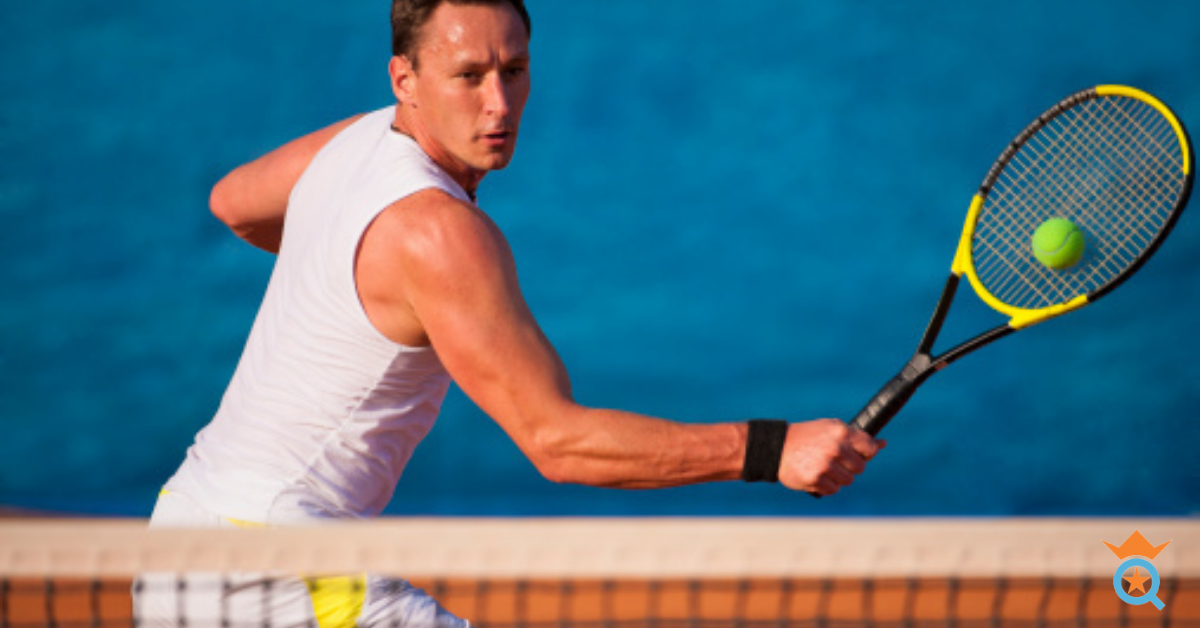
Backhand Techniques and Grips
There are several backhand techniques that players can choose from, each with its own unique advantages and challenges. The two most common backhand stroke techniques are the one-handed backhand and the two-handed backhand.
- One-Handed Backhand: This classic backhand technique involves using only one hand to hold the racquet. Players who prefer the one-handed backhand often enjoy greater reach and more natural wrist movement, which can result in more powerful and precise shots. However, it can be more challenging to master, as it requires more upper-body strength and control.
- Two-Handed Backhand: The two-handed backhand technique involves holding the racquet with both hands, with the non-dominant hand placed above the dominant hand on the grip. This technique offers more control and stability, making it easier for players to generate power and topspin. However, the two-handed backhand has a smaller reach, which can limit a player's ability to cover the entire court.
In addition to the choice between one-handed and two-handed backhands, players must also consider the type of grip they use.
The three main backhand grip options are the semi-western, eastern, and continental grips.
- Semi-Western Backhand Grip: This grip provides a good balance between power and control, making it popular among modern tennis players. The semi-western grip allows for easy generation of topspin, which helps keep the ball in play and adds depth to shots.
- Eastern Backhand Grip: The eastern grip offers a more natural feel and allows for flatter, more powerful shots. It is especially useful for players who prefer the one-handed backhand, as it helps with shot placement and control.
- Continental Grip: The continental grip is versatile and can be used for both backhand and forehand strokes, as well as serves and volleys. While it may not provide the same level of power and control as the other grips, it is a good option for players who want to simplify their grip changes during a match.
Understanding the importance of a strong backhand and exploring various backhand techniques and grips can significantly impact a tennis player's performance.
By experimenting with different techniques and finding the one that best suits their individual style and strengths, players can develop a powerful and reliable backhand stroke to enhance their overall game.
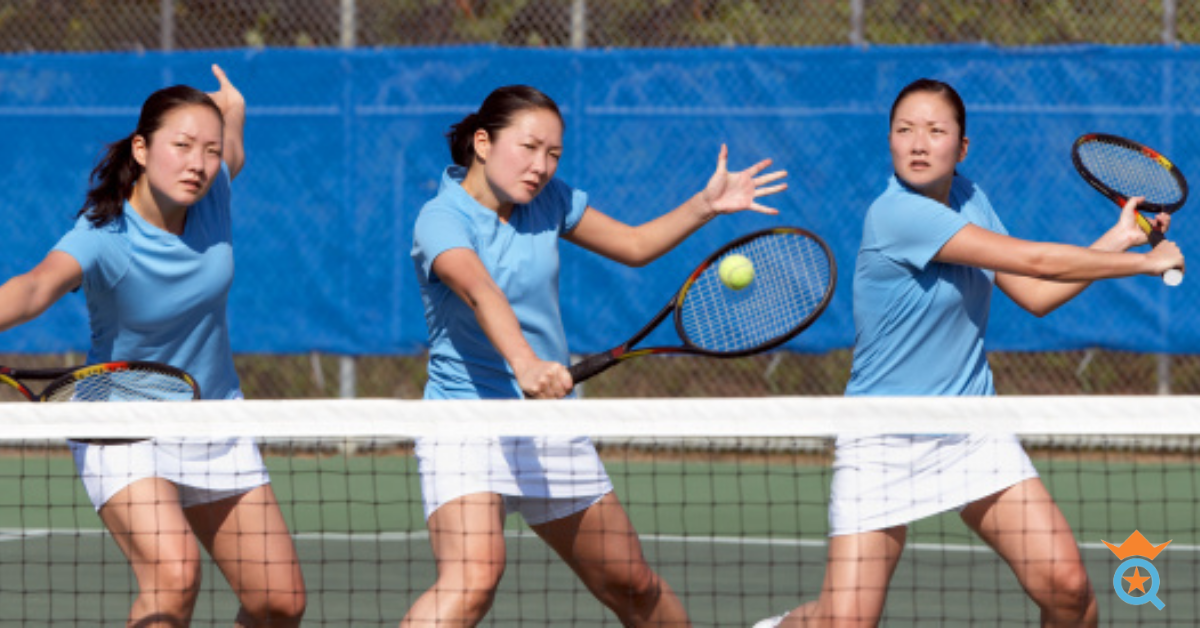
One-Handed Backhand Technique
The one-handed backhand is a classic and elegant stroke that has been used by some of the greatest tennis players in history. While mastering this technique may present some challenges, the advantages it offers can make it a powerful weapon in your tennis arsenal.
Let's dive into the one-handed backhand technique and discuss its benefits, key elements, and essential factors like contact point, hitting arm, and racquet head angle.
Advantages and Challenges of the One-Handed Backhand
One of the main advantages of the one-handed backhand is its increased reach. Because only one hand is holding the racquet, the hitting arm can be extended further, allowing you to cover more court and return shots that may be out of reach for a two-handed backhand player. This extra reach also helps in hitting wide-angle shots and passing shots, putting more pressure on your opponent.
Additionally, the one-handed backhand allows for greater wrist flexibility, which can result in more precise shot placement and increased spin on the ball. This flexibility also enables players to hit a wider variety of shots, such as drop shots and slice backhands, with more ease.
However, the one-handed backhand comes with its share of challenges. It requires greater upper body strength, as the racquet's weight and the force of the shot must be controlled by a single arm. This can make it more difficult for some players to generate power, especially when compared to the two-handed backhand. Mastering the technique can also take longer due to its reliance on precise timing and body coordination.
Key Elements of the One-Handed Backhand Technique
To execute a successful one-handed backhand, there are several key elements to consider:
- Stance: Adopt a closed or semi-open stance, with your feet shoulder-width apart and your non-dominant foot slightly in front of the dominant foot. This stance allows for proper weight transfer and body rotation during the stroke.
- Backswing: As the ball approaches, rotate your shoulders and hips, and take your racquet back with a straight-hitting arm. The racquet should be positioned behind you, with the head pointing up and the strings facing the ground.
- Forward Swing: Begin to uncoil your body by rotating your hips and shoulders back towards the net. As you do this, move your racquet forward and slightly upward, maintaining a straight hitting arm.
Contact Point, Hitting Arm, and Racquet Head Angle
- Contact Point: Aim to make contact with the ball slightly in front of your body and around waist height. This positioning allows for optimal power and control while reducing the chance of hitting the ball too early or late.
- Hitting Arm: Keep your hitting arm straight throughout the stroke, with a slight bend at the elbow. This helps maintain stability and control during the shot. After contact, the hitting arm should continue to extend and finish high, with the racquet head above shoulder height.
- Racquet Head Angle: At the point of contact, the racquet head should be slightly closed, with the strings facing down towards the ground. This angle helps to generate topspin on the ball, increasing its trajectory and making it more challenging for your opponent to return.
The one-handed backhand technique offers some unique advantages in terms of reach, flexibility, and shot variety. However, mastering this stroke requires dedication, strength, and precise timing.
By focusing on key elements like stance, backswing, and forward swing, as well as essential factors like contact point, hitting arm, and racquet head angle, you can develop a powerful and effective one-handed backhand to elevate your tennis game.
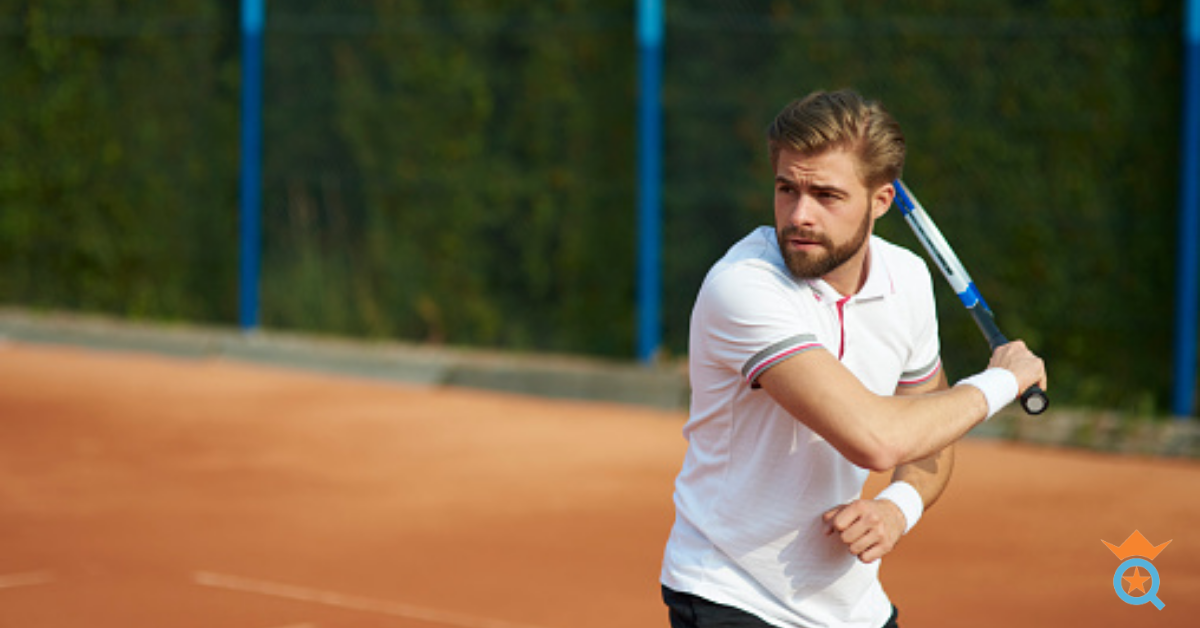
Two-Handed Backhand Technique
As we've explored the one-handed backhand technique, it's important to also consider its counterpart: the two-handed backhand. This technique has gained popularity among tennis players over the years and has its own unique set of benefits and challenges.
In this section, we'll discuss the advantages and drawbacks of the two-handed backhand, as well as the key components of this stroke, including the role of the dominant hand, contact point, and racquet control.
Benefits and Drawbacks of the Two-Handed Backhand
The two-handed backhand technique offers several benefits that make it a popular choice among tennis players. One of the primary advantages is the increased control and stability it provides. Because both hands are gripping the racquet, players can generate more power and maintain better control over their shots, particularly when returning high-velocity balls.
The two-handed backhand also allows for easier topspin generation, making it an effective weapon for creating high, deep shots that push opponents back and open up the court. Moreover, the added support from the non-dominant hand can make this stroke more comfortable and accessible for beginners learning the game.
However, the two-handed backhand does have some drawbacks. The most notable disadvantage is the reduced reach compared to the one-handed backhand. This limitation can make it more difficult for players to cover the entire court and return wide or low shots.
Additionally, the two-handed backhand may require more complex footwork and body rotation to execute effectively, as it relies on the coordinated effort of both arms.
Dominant Hand Role, Contact Point, and Racquet Control
- Dominant Hand Role: In the two-handed backhand, the dominant hand acts as a guide and provides stability, while the non-dominant hand generates power and spin. During the forward swing, focus on using your non-dominant hand to accelerate the racquet through the shot.
- Contact Point: Make contact with the ball slightly in front of your body and around waist height. This positioning allows for optimal power, control, and follow-through while minimizing the chance of hitting the ball too early or late.
- Racquet Control: At the point of contact, the racquet head should be vertical or slightly closed, with the strings facing the ball. This angle helps generate topspin and ensures a clean, controlled shot. After contact, the racquet should follow through across your body, with both hands finishing high and your dominant elbow pointing towards the target.
The two-handed backhand technique offers increased control, stability, and power, making it an attractive choice for many tennis players.
By understanding the benefits and drawbacks of this stroke and focusing on essential components like stance, grip, and backswing, as well as the role of the dominant hand, contact point, and racquet control, you can develop a formidable two-handed backhand to enhance your overall tennis game.
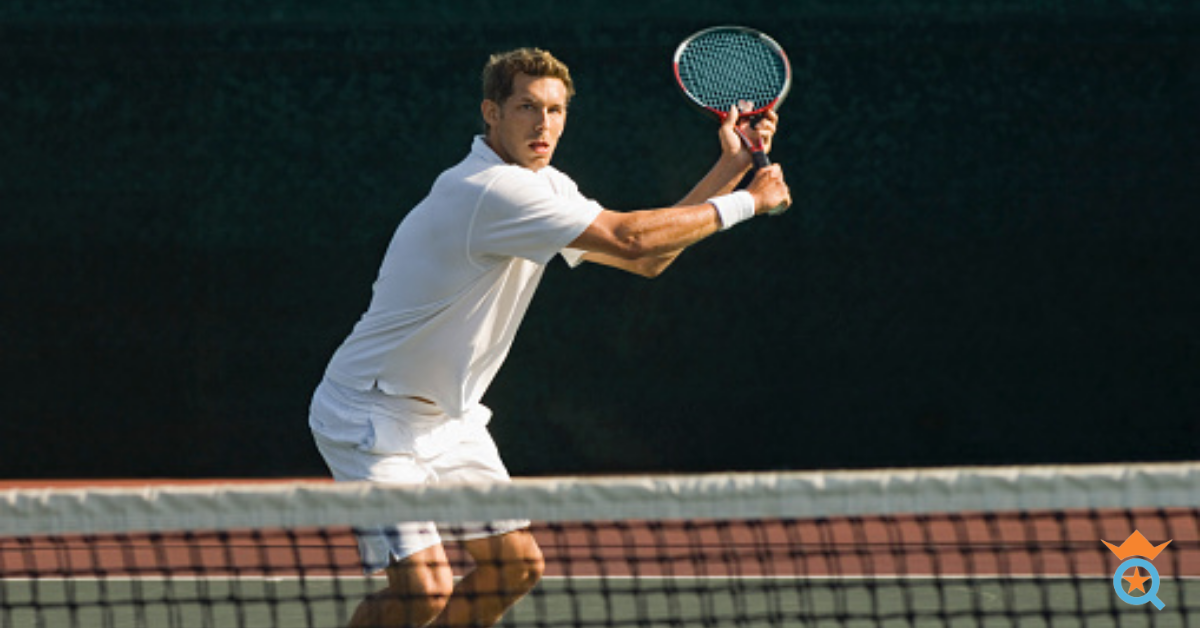
Exploring Tennis Backhand Grips
As we've delved into the world of tennis backhand techniques, it's essential to also discuss the various grips that can be used to execute these strokes.
The grip you choose can have a significant impact on the power, control, and spin you generate with your backhand. In this section, we'll take a closer look at the semi-western backhand grip, eastern backhand grip, and versatile continental grip, exploring their unique characteristics and advantages.
Semi-Western Backhand Grip and Its Characteristics
The semi-western backhand grip is popular among modern tennis players, as it offers a great balance of power, control, and spin. To achieve this grip, place the base knuckle of your index finger on the fifth bevel of the racquet handle, with your other fingers wrapping around the handle naturally.
This grip allows for easy generation of topspin, which helps keep the ball in play and adds depth to your shots. The semi-western backhand grip is particularly useful for the two-handed backhand, as it enables you to maintain strong, stable contact with the ball while still providing the flexibility to generate spin and pace.
Eastern Backhand Grip and Its Advantages
The eastern backhand grip is another popular option, especially among players who prefer the one-handed backhand. To adopt this grip, place the base knuckle of your index finger on the first bevel of the racquet handle.
The eastern grip offers a more natural feel, allowing you to hit flatter and more powerful shots. Its unique positioning enables players to maintain better control and shot placement, making it an ideal choice for those looking to add precision to their one-handed backhand.
Additionally, the eastern grip makes it easier to transition between the backhand and forehand sides, which can be advantageous during fast-paced rallies.
Continental Grip and Its Versatility
Last but not least, the continental grip is a versatile option that can be used for a variety of strokes, including backhand and forehand groundstrokes, serves, and volleys.
To achieve the continental grip, place the base knuckle of your index finger on the second bevel of the racquet handle. While the continental grip may not provide the same level of power, control, and spin as the other two grips, its versatility makes it an attractive choice for players looking to simplify their grip changes during a match.
This grip can be particularly useful for those who enjoy playing an all-court game, as it allows for seamless transitions between different shots and court positions.
The choice of grip can greatly influence your backhand stroke's effectiveness and style. By exploring the unique characteristics and advantages of the semi-western backhand grip, eastern backhand grip, and versatile continental grip, you can determine which grip best suits your playing style and preferences.
Experimenting with different grips and finding the right fit can ultimately help elevate your tennis game and make your backhand a force to be reckoned with on the court.
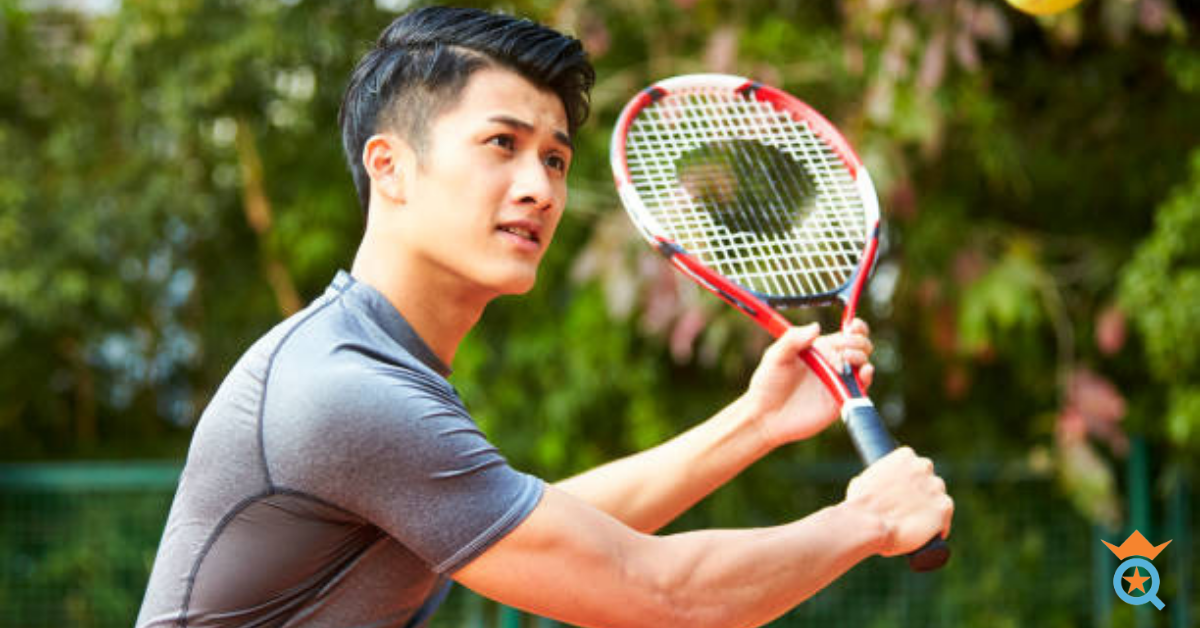
Perfecting the Slice Backhand
A slice backhand is a valuable tool in modern tennis, offering players a versatile shot that can be used in a variety of situations. From creating deceptive shots to neutralizing powerful returns, the slice backhand can be a game-changer when executed correctly. In this section, we'll discuss the importance of the slice backhand in today's game, break down the technique for executing this stroke, and share some tips for generating backspin and precise placement.
Importance of Slice Backhand in Modern Tennis
The slice backhand is an essential shot in the arsenal of any well-rounded tennis player. Its unique characteristics make it an effective weapon against opponents who rely heavily on power and topspin. Here are some key reasons why the slice backhand is important in modern tennis:
- Change of Pace: The slice backhand introduces a change of pace to rallies, forcing opponents to adjust their timing and rhythm. This can cause errors or create opportunities for you to take control of the point.
- Neutralizing Power: The backspin generated by the slice backhand can help neutralize powerful shots, allowing you to return aggressive strokes with greater control and stability.
- Low Trajectory: The slice backhand typically travels low and skids across the court, making it difficult for opponents to attack and forcing them to hit up on the ball.
- Defensive Play: A slice backhand is an excellent option for defensive play, as it can be used to buy time, recover position, or return wide or low shots.
Technique Breakdown: Backhand Slice Execution
To execute a successful slice backhand, follow these steps:
- Stance: Adopt a closed or semi-open stance, with your feet shoulder-width apart and your non-dominant foot slightly in front of the dominant foot.
- Grip: Use a continental grip, placing the base knuckle of your index finger on the second bevel of the racquet handle.
- Backswing: Rotate your shoulders and hips, taking your racquet back with a straight hitting arm. The racquet head should be positioned above your shoulder, with the strings facing the net.
- Forward swing: Begin to uncoil your body, moving your racquet forward and slightly downward. Maintain a high-to-low swing path and keep your wrist firm to generate a backspin.
- Contact point: Make contact with the ball slightly in front of your body and around waist height, with the racquet face slightly open.
- Follow-through: Extend your hitting arm forward and slightly upward, finishing with the racquet head above your non-dominant shoulder.
Tips for Generating Backspin and Placement
- Brush underneath the ball: To generate a backspin, focus on brushing the racquet underneath the ball, making contact with the lower half of the ball. This will cause the ball to rotate backward, creating the desired backspin effect.
- Maintain a firm wrist: A firm wrist is essential for controlling the slice backhand and generating the necessary backspin. Avoid flicking your wrist, as this can lead to inconsistent shots and reduced control.
- Use your body: Engage your core and use your body rotation to generate power and control in the slice backhand. This will help you achieve better placement and depth in your shots.
- Aim for depth: Aim to hit your slice backhands deep into your opponent's court. This will force them to move back and make it more difficult for them to attack your shot.
- Practice, practice, practice: Like any other tennis stroke, perfecting the slice backhand requires dedicated practice. Spend time on the court working on this shot, focusing on technique, placement, and consistency.
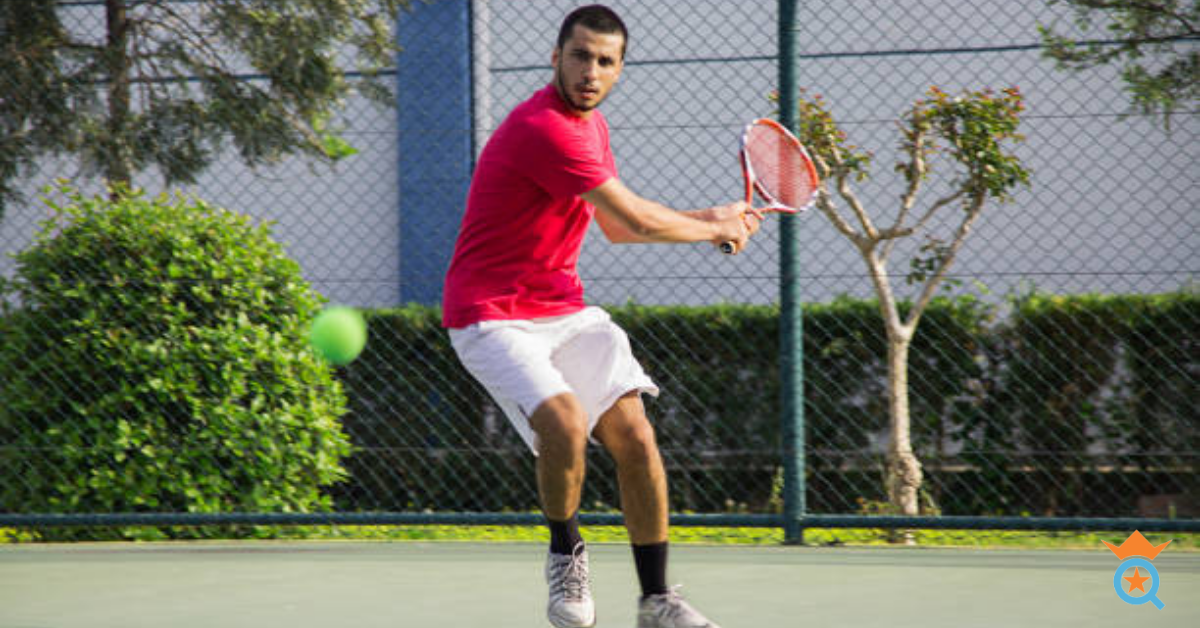
Tennis Backhand Groundstrokes: Topspin and Flat Shots
While we've discussed various backhand techniques and grips, it's essential to delve into the two main types of backhand groundstrokes: topspin and flat shots. Both types of strokes serve different purposes and can be highly effective when used correctly.
In this section, we'll discuss the key differences between topspin and flat backhand groundstrokes, explore techniques for generating topspin on your backhand side, and share strategies for hitting powerful flat backhand shots.
Key Differences Between Topspin and Flat Backhand Groundstrokes
Topspin backhand groundstrokes are characterized by the ball rotating forward, causing it to dip and bounce higher upon contact with the court. This type of stroke is effective for keeping the ball in play, applying pressure to your opponent, and setting up opportunities for aggressive shots.
Flat backhand groundstrokes, on the other hand, have minimal spin and travel in a straighter trajectory. These shots are typically faster and more powerful, making them an excellent option for attacking short balls or putting away weak returns.
Techniques for Generating Topspin on Your Backhand Side
- Grip: Opt for a semi-western or eastern backhand grip, which facilitates better topspin generation due to their positioning on the racquet handle.
- Stance: Adopt a closed or semi-open stance, allowing for better body rotation and weight transfer during the shot.
- Swing Path: Focus on a low-to-high swing path, starting below the ball and finishing high above your shoulder. This upward motion helps create the necessary topspin on the ball.
- Contact Point: Make contact with the ball in front of your body, at waist height or slightly higher. This positioning allows for a better angle to generate topspin.
- Follow-through: After making contact, extend your arm and finish with your racquet high above your shoulder. This follow-through helps maintain the topspin and ensures proper control of the shot.
Strategies for Hitting Powerful Flat Backhand Shots
- Grip: Use an eastern backhand grip or a more neutral continental grip, which provides better control and allows for flatter shot execution.
- Stance: Opt for a closed or semi-open stance, ensuring proper balance and stability during the shot.
- Swing Path: Maintain a more linear swing path, minimizing the upward motion. This helps generate the flatter trajectory required for a powerful shot.
- Contact Point: Hit the ball slightly higher than waist height and in front of your body. This allows for better power generation and control for a flat backhand groundstroke.
- Follow-through: Keep your follow-through relatively compact, finishing with your racquet head around shoulder height. This abbreviated follow-through helps maintain the flatter trajectory of the shot.
Understanding the differences between topspin and flat backhand groundstrokes and mastering the techniques to execute them effectively can significantly enhance your tennis game. By incorporating both types of shots into your repertoire, you'll be better equipped to handle various situations on the court and keep your opponents guessing.
Experiment with these strategies and practice regularly to develop a well-rounded and formidable backhand.
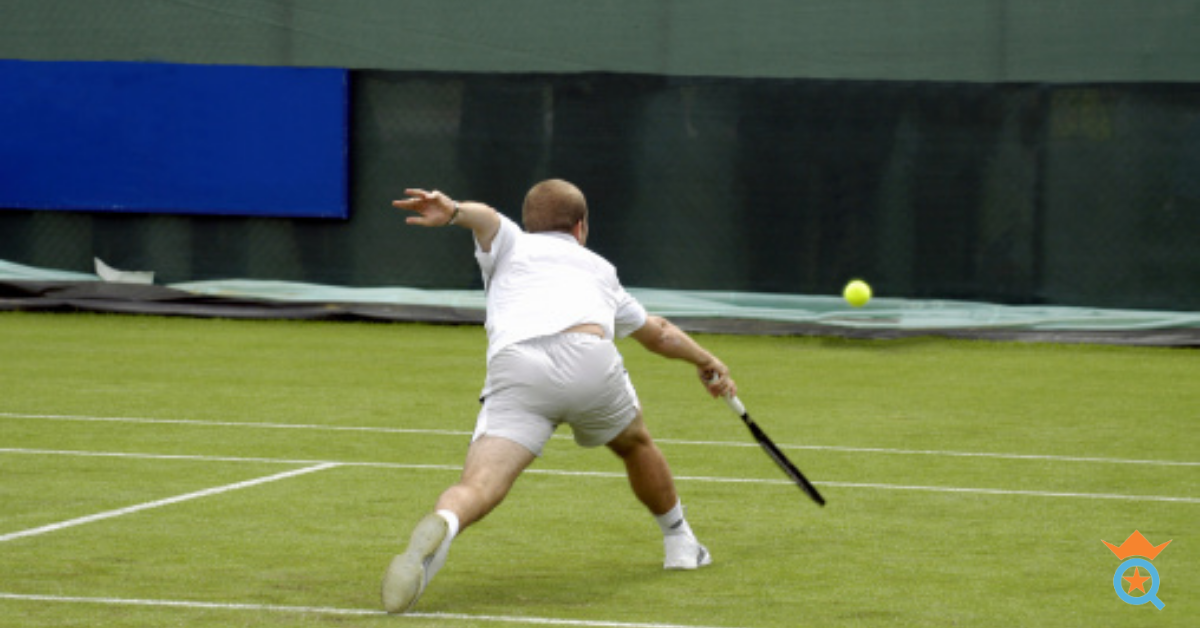
Tennis Court Positioning for Effective Backhand Strokes
Having a solid backhand technique is essential, but proper court positioning plays a significant role in executing effective backhand strokes. Being in the right position on the tennis court ensures that you can hit powerful, controlled shots while keeping your opponent on their toes. In this section, we'll discuss the importance of proper positioning on the tennis court, share tips for optimal backhand stroke zones and footwork, and explore adjustments for different playing surfaces.
Proper court positioning is crucial for several reasons:
- Balance and Stability: Being in the right position allows you to maintain balance and stability during your shots, ensuring that you can generate power and control effectively.
- Shot Selection: Good court positioning enables you to choose the most suitable shot for each situation, whether it's a topspin backhand, a flat shot, or a slice.
- Anticipation and Reaction: Proper positioning helps you anticipate your opponent's shots and react more quickly, allowing you to be better prepared for their returns.
- Control and Placement: When you're well-positioned on the court, you can better control the placement of your shots, making it more difficult for your opponent to return the ball.
Tips for Optimal Backhand Stroke Zones and Footwork
- Split-step: As your opponent prepares to hit the ball, use a split-step to get ready for your next move. This will help you react faster and maintain balance as you move to the appropriate position.
- Move to the Ball: Instead of reaching for the ball, focus on moving your feet and body to get into the optimal hitting position. This will allow you to maintain control and hit more consistent backhand strokes.
- Maintain a Comfortable Distance: Make sure you're not too close or too far from the ball when hitting a backhand. You should be far enough away to allow for a full swing and extension but close enough to maintain control.
- Use a Balanced Stance: Adopt a closed or semi-open stance when hitting a backhand stroke, as this will provide you with the necessary balance and stability for a powerful, controlled shot.
- Recover Quickly: After hitting your backhand, focus on quickly recovering and returning to a neutral position on the court. This will ensure you're prepared for your opponent's next shot.
Adjusting to Different Playing Surfaces
Different court surfaces can affect how you position yourself and execute your backhand strokes. Here are some adjustments to consider for various playing surfaces:
- Clay courts: On clay courts, the ball tends to bounce higher and slower. Focus on adjusting your footwork and positioning to accommodate for the slower pace and higher bounce.
- Hard courts: Hard courts typically offer a medium to fast pace and a consistent bounce. Ensure that you're well-positioned and balanced to handle the faster pace and take advantage of the consistent bounce for your backhand strokes.
- Grass courts: Grass courts often produce a lower and faster bounce, which can make executing backhand strokes more challenging. Focus on staying low and adjusting your footwork to handle the quick, low bounces.
Proper court positioning is crucial for executing effective backhand strokes in tennis. By focusing on optimal backhand stroke zones, and footwork, and adjusting to different playing surfaces, you can greatly improve your backhand and overall game.
With practice and persistence, you'll be able to master court positioning and become a formidable force on the tennis court.
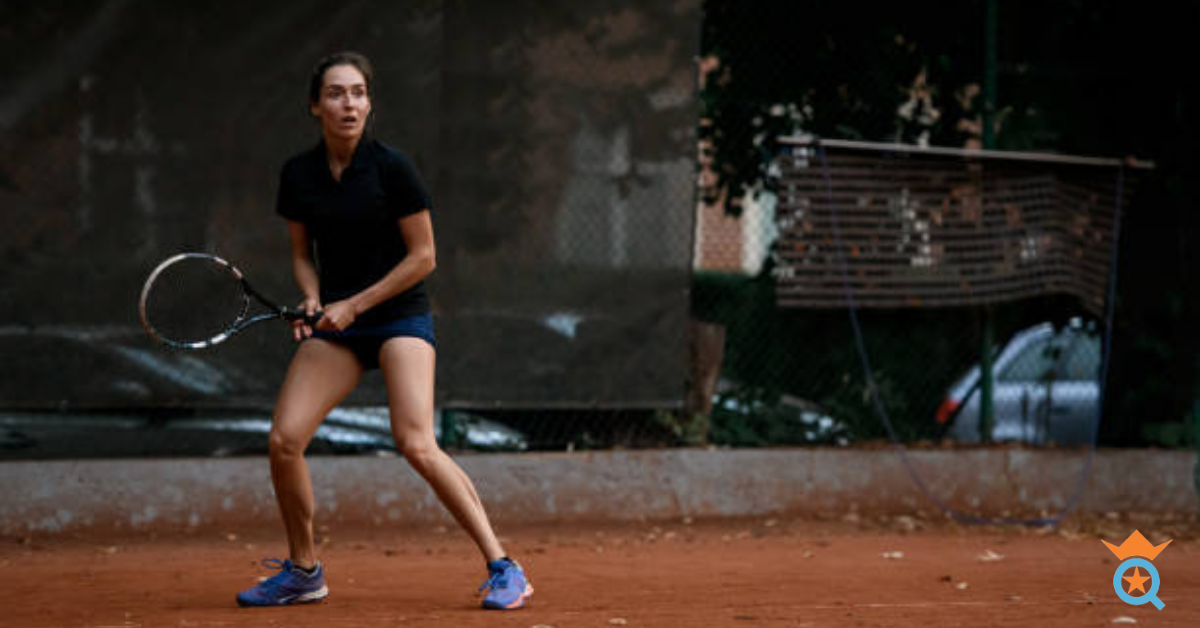
Learning from the Pros: Analyzing Top Tennis Players' Backhand Techniques
If you're looking to improve your backhand technique, one of the best ways to learn is by studying the pros. Top tennis players have honed their backhand strokes through years of practice, and analyzing their techniques can provide valuable insights into what makes their shots so effective.
Examining the Backhand Strokes of Renowned Tennis Players
Roger Federer: Known for his elegant one-handed backhand, Federer's stroke is characterized by its fluid motion and precise timing. He generates power and topspin with a smooth, low-to-high swing, and his follow-through is both graceful and controlled.
Serena Williams: Williams' two-handed backhand is a powerful weapon in her arsenal. Her stroke is marked by its explosive acceleration and aggressive footwork, allowing her to generate tremendous pace and spin on the ball.
Novak Djokovic: Djokovic's two-handed backhand is considered one of the best in the game. His technique is characterized by its consistency, accuracy, and ability to produce powerful shots from defensive positions. Djokovic utilizes exceptional footwork and body rotation to generate pace and maintain control.
Stan Wawrinka: Wawrinka's one-handed backhand is both powerful and aesthetically pleasing. His stroke is defined by its fluidity and aggressive swing, enabling him to generate substantial topspin and pace. Wawrinka's backhand is especially effective as a down-the-line weapon.
Insights into Their Unique Techniques and Styles
While each of these players has a distinctive backhand technique, there are common elements in their strokes that you can learn from:
Footwork: All top players emphasize the importance of footwork in their backhand strokes. Proper foot positioning and balance allow them to generate power and maintain control throughout the shot.
Timing: The best backhands are characterized by precise timing. Hitting the ball at the optimal contact point enables players to generate pace and spin while maintaining accuracy.
Body rotation: Utilizing body rotation is crucial for generating power in a backhand stroke. Top players engage their hips, torso, and shoulders in a coordinated motion to transfer energy through the shot.
Follow-through: A controlled follow-through is essential for maintaining accuracy and consistency in a backhand stroke. Top players ensure that their follow-through is smooth and controlled, finishing with the racquet in the proper position.
Applying Pro Tips to Improve Your Own Backhand
You can use the insights gleaned from studying top tennis players to improve your own backhand. Focus on perfecting footwork and timing, as well as proper body rotation and follow-through. Also, pay attention to the contact point of the ball when you hit your backhands, aiming for optimal depth in the court. With practice and persistence, you'll be able to master these techniques and become a formidable force on the tennis court.
Practice footwork: Focus on improving your footwork by incorporating agility drills and movement exercises into your training routine. This will help you get into the right position to execute your backhand stroke effectively.
Work on timing: Develop your timing by practicing hitting the ball at the optimal contact point. Use a ball machine or practice with a partner to work on this aspect of your backhand.
Strengthen body rotation: Incorporate exercises that target your core and rotational strength into your fitness regimen. This will help you generate more power and maintain control during your backhand stroke.
Refine your follow-through: Practice your backhand follow-through by ensuring that your racquet finishes in the proper position. Focus on a smooth, controlled motion to improve your consistency and accuracy.
By analyzing the backhand techniques of top tennis players, you can gain valuable insights into what makes their strokes so effective. Applying these pro tips to your own game will help you develop a more powerful, consistent, and accurate backhand.

Drills and Exercises for Strengthening Your Tennis Backhand
To improve your tennis backhand, it's important to incorporate drills and exercises that focus on building muscle memory and consistency. Improving both one-handed and two-handed backhand techniques, offer tips for incorporating slice and topspin backhands into your practice routine, and explores the benefits of repetition for building strength and consistency.
Wall practice: Stand close to a wall and hit backhands to the wall. This will help you develop a consistent swing and improve your contact point.
Cross-court backhands: Practice hitting backhands cross-court, focusing on keeping the ball low and generating topspin.
Backhand volley drills: Work on your backhand volleys by hitting balls at the net. This will help you develop soft hands and improve your control.
One-handed backhand slice drills: Focus on hitting low backhand slices that skid and stay low. This will help you develop a versatile shot that can disrupt your opponent's rhythm.
Two-handed backhand topspin drills: Practice hitting high, looping topspin backhands. This will help you generate pace and depth in your shots.

Building Muscle Memory and Consistency through Repetition
Repetition is essential for building muscle memory and consistency in your backhand stroke. Focus on hitting a high volume of backhands during practice sessions to develop a consistent swing and build strength. As you progress, try to incorporate more complex drills and exercises into your routine to challenge yourself and continue improving.
On the other hand, incorporating drills and exercises into your practice routine is crucial for strengthening your tennis backhand. Focus on developing muscle memory and consistency through repetition, and incorporate drills that target both one-handed and two-handed backhand techniques.
Don't forget to practice slice and topspin backhands to add versatility to your game. With dedication and practice, you'll be well on your way to mastering your tennis backhand.
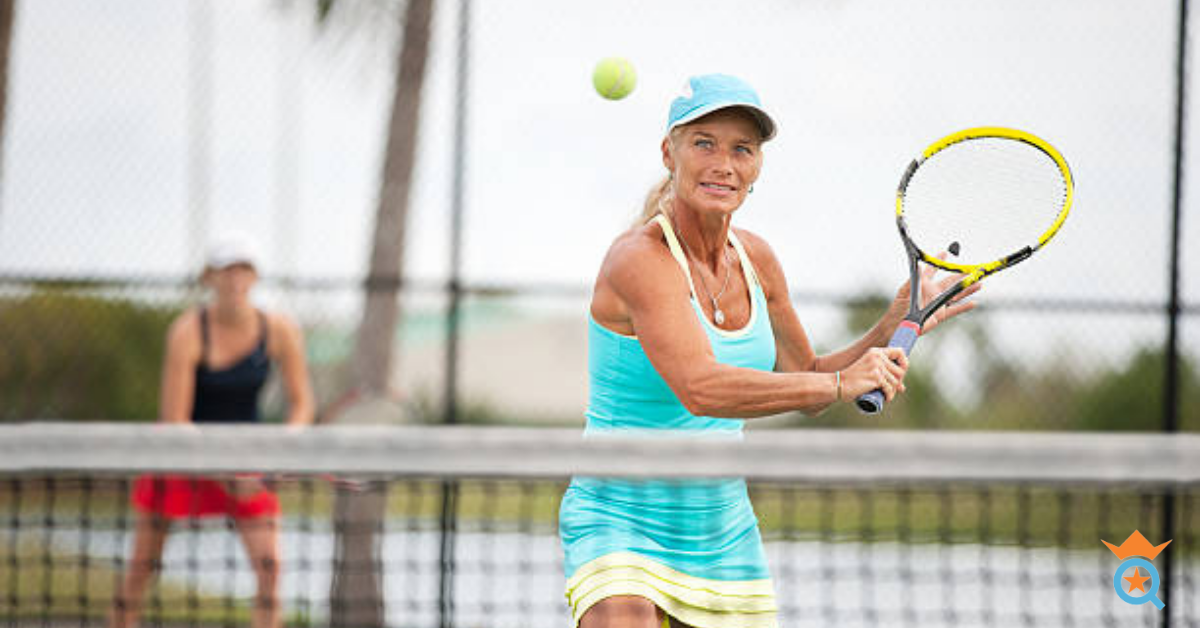
The Bottom Line
Mastering the tennis backhand stroke technique is a crucial aspect of becoming a well-rounded tennis player. From choosing the right grip to practicing drills and exercises that build strength and consistency, there are many elements to consider when developing your backhand technique.
By studying the techniques of top tennis players, practicing drills that target both one-handed and two-handed backhand techniques, and incorporating slice and topspin backhands into your practice routine, you can improve your backhand and take your game to the next level.
With dedication and practice, you'll be well on your way to developing a strong and reliable backhand stroke that can help you win matches and take on any opponent.








